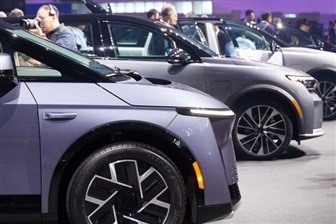Major contract electronics makers are accelerating strategic realignments in line with the rapid development of automotive electronics and architectures for software-defined vehicles (SDV). Foxconn has continued to clarify its automotive layout as it expands from full vehicle assembly into core electronics for SDVs, by integrating semiconductors, smart cockpits, battery management systems (BMS), and silicon carbide (SiC) power components into its contract design and manufacturing services (CDMS).
The PC market has been heavily impacted by memory supply disruptions. In response, Acer Group's subsidiary Acer Gadget has partnered with Quanta Group's RoyalTek and Taiwan's leading auto parts retailer New Focus Auto (NFA) to launch smart in-vehicle products.
Foxtron Inc. has confirmed its acquisition of 100% of Luxgen Motor from Yulon Group for NT$7.876 billion (US$250 million), aiming to solidify its foothold in Taiwan's electric vehicle (EV) market. The deal, announced at a joint press conference on the evening of December 19, marks a significant step in Foxtron's strategic expansion within the local EV sector.
Shihlin Electric is experiencing robust growth driven by expanding AI computing power needs and accelerated investment in power infrastructure. At HCT Logistics' smart electric vehicle (EV) launch event on December 18, 2025, Shihlin Electric showcased its commercial electric logistics fleet developed with CMC, alongside an integrated solar, charging, and energy storage power system.
Global automotive sales are likely to edge higher in 2026, returning roughly to pre-pandemic levels, but the industry should not expect a swift or robust recovery, according to Jay Shen, managing director of the Garmin Asia Auto OEM Group. While demand is improving compared with 2025, he said, structural pressures and policy uncertainty will continue to weigh on growth.
The global auto industry is entering an unusual phase of expansion—one driven less by strategic ambition than by the need to survive. China's automakers have unleashed a surge of exports that, at first glance, looks like an aggressive push into overseas markets. Beneath the surface, however, lies a harsher reality: cutthroat competition at home and a deepening structural overcapacity that is leaving many firms with few viable alternatives.
Line go, a leading Mobility as a Service (MaaS) platform in Taiwan, has integrated seven key transportation services into a single digital ecosystem, now serving over 4.8 million users nationwide. The company recently obtained dual international ISO certifications for information security and privacy protection as it rapidly expands its service offerings and technological capabilities.
On the evening of December 19, Yulon Motor Co. and Foxtron Vehicle Technologies jointly announced a strategic transaction aimed at consolidating Taiwan's electric vehicle ecosystem.
As competitive pressures in China's domestic auto market continue to intensify, Chinese carmakers are rapidly upgrading their overseas expansion strategies. What was once a straightforward export business—selling vehicles abroad—has evolved into what industry executives describe as "Go Global 2.0": a coordinated effort to export entire industrial systems and ecosystems, not just finished products.
China Motor (CMC), Taiwan's leading commercial vehicle manufacturer, officially delivered its first batch of 30 self-developed 3.5-ton electric trucks, the ET35, to HCT Logistics on December 18.
Hotai Motor Co. plans to invest approximately NT$10 billion (US$317 million) in Japan's commercial vehicle market, marking its first international expansion. The company will acquire an 80% stake in five Hino Motors Ltd. subsidiaries, pending regulatory approval. The deal is expected to close in April 2026.
More coverage



